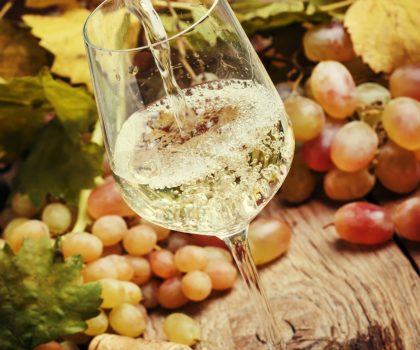Enjoy dry or sweet Rieslings with a wide variety of cheese and food

By Mary Malik
Do you like it dry or sweet—your wine, that is? And come to think of it, what makes a wine dry or sweet to begin with? For these questions we turn to Jim Sperk of the Northern Ohio Wine Guild.
“During the fermentation process, yeast converts the sugars in the grapes to alcohol,” says Jim. “If the fermentation process goes to completion, the yeast will have devoured most of the sugar and the wine will be ‘dry.’ If fermentation stops early, there will be residual sugar left in the wine.”
For a wine to be considered dry there must be less than one percent residual sugar (RS) in the wine. For a wine to be considered sweet, it must be over 20 percent RS. Wines that fall in between are often labeled off-dry, semi-dry or semi-sweet.
“One wine that runs the gamut from dry to sweet is Riesling,” says Jim. “A Riesling can range from 0.3 percent RS to a whopping 30 percent. The amount of residual sugar contributes to a wide range of flavors and the sugar can enhance the fruity aspect of a wine.”
Dry Rieslings will have more mineral flavors with complex fruit layers and notes of apple, pear, lemon, pineapple and cantaloupe. The finish will be clean, crisp and, well…dry.
“Sweeter Rieslings are crisp and refreshing as well, but are more balanced with sweetness,” says Jim. “These wines are more fruit-forward with more powerful tropical fruit flavors and a honey finish.”
Sweet or dry, Rieslings pair well with a wide variety of cheese and food, including spicy fare. They are usually lower in alcohol compared to other varietals, fruity in aroma, refreshing on a hot, late-summer day and best served at 45-50 degrees.
For information on the Northern Ohio Wine Guild, contact Jim Sperk at tinymoonwines@usa.net.
